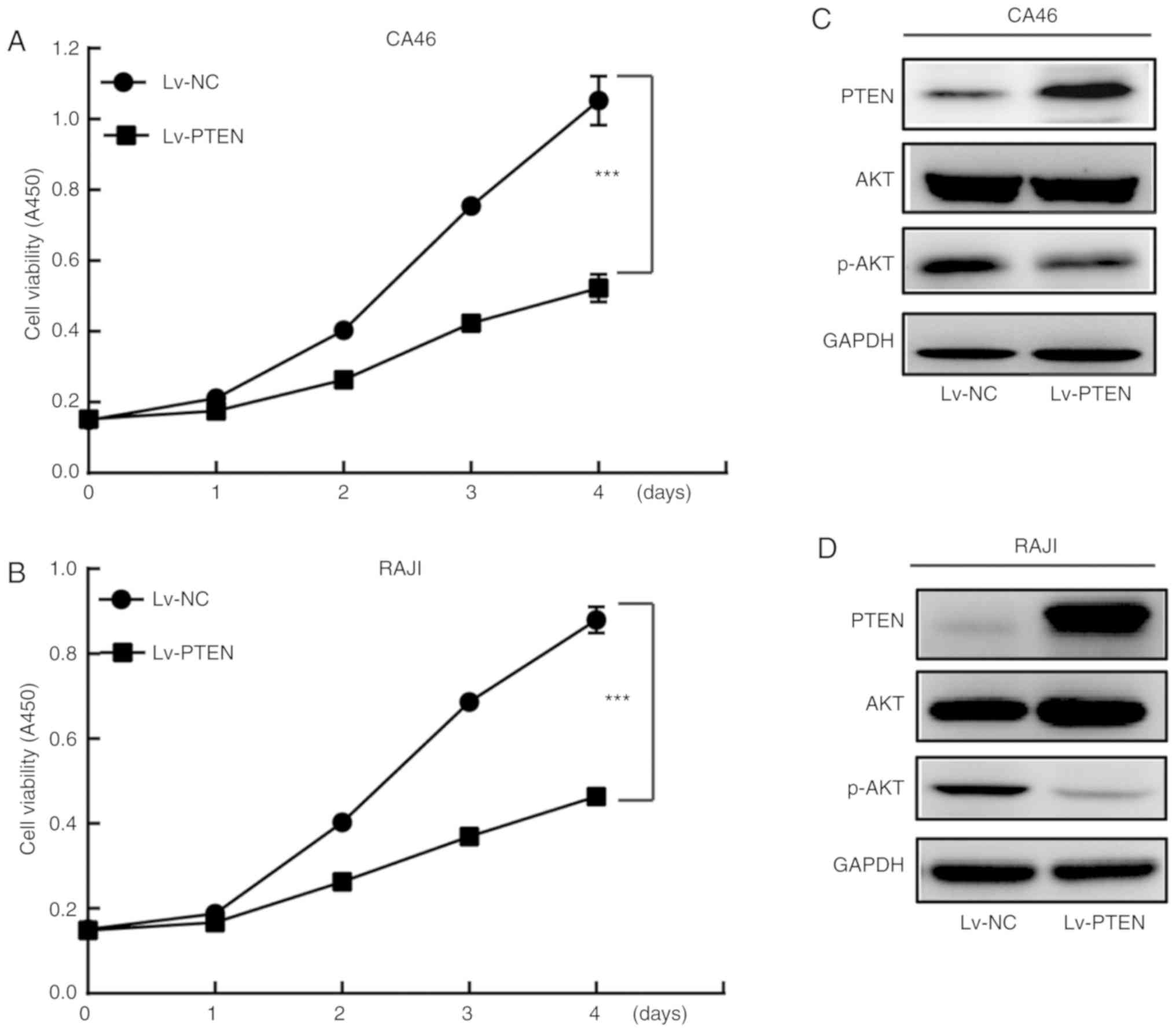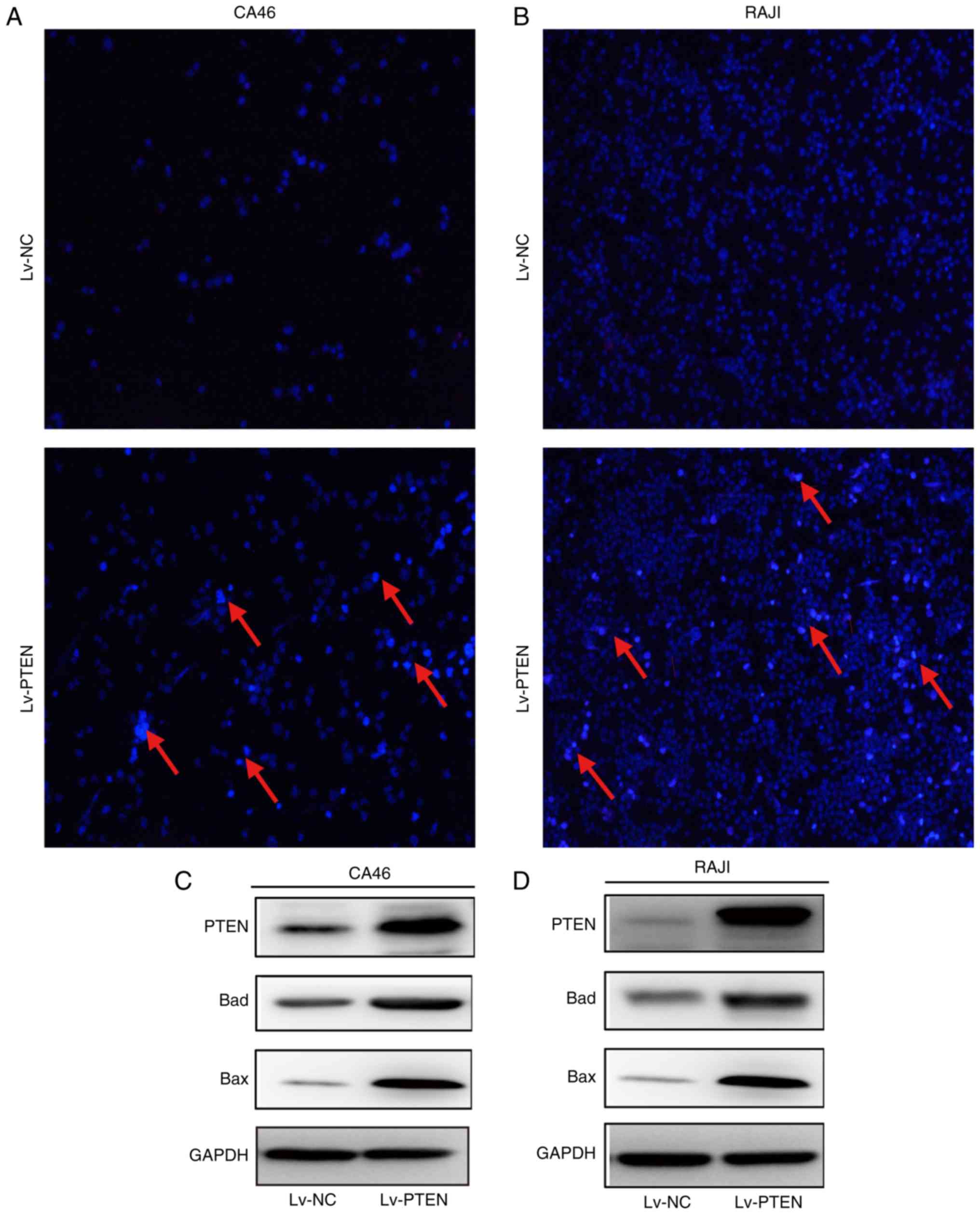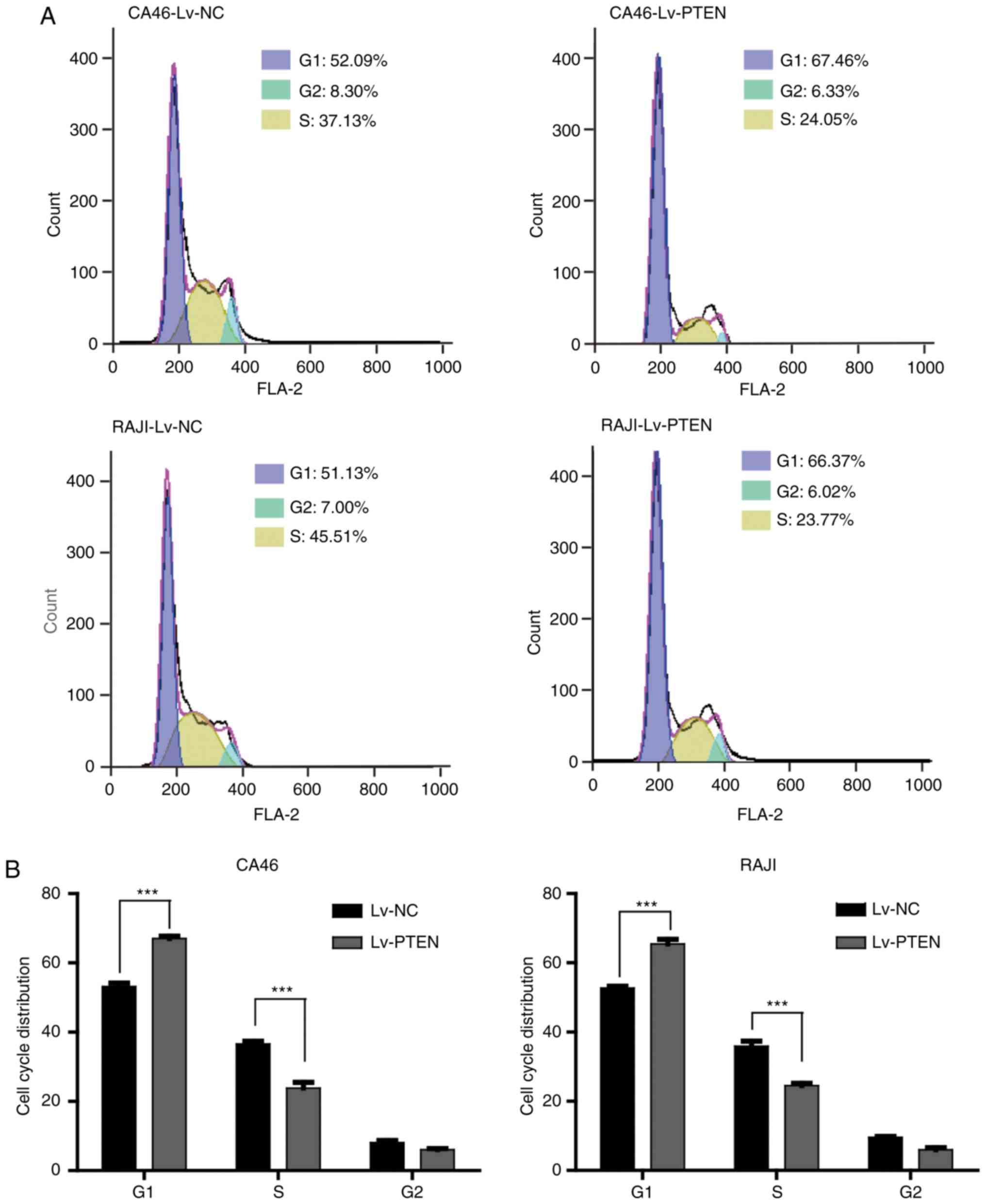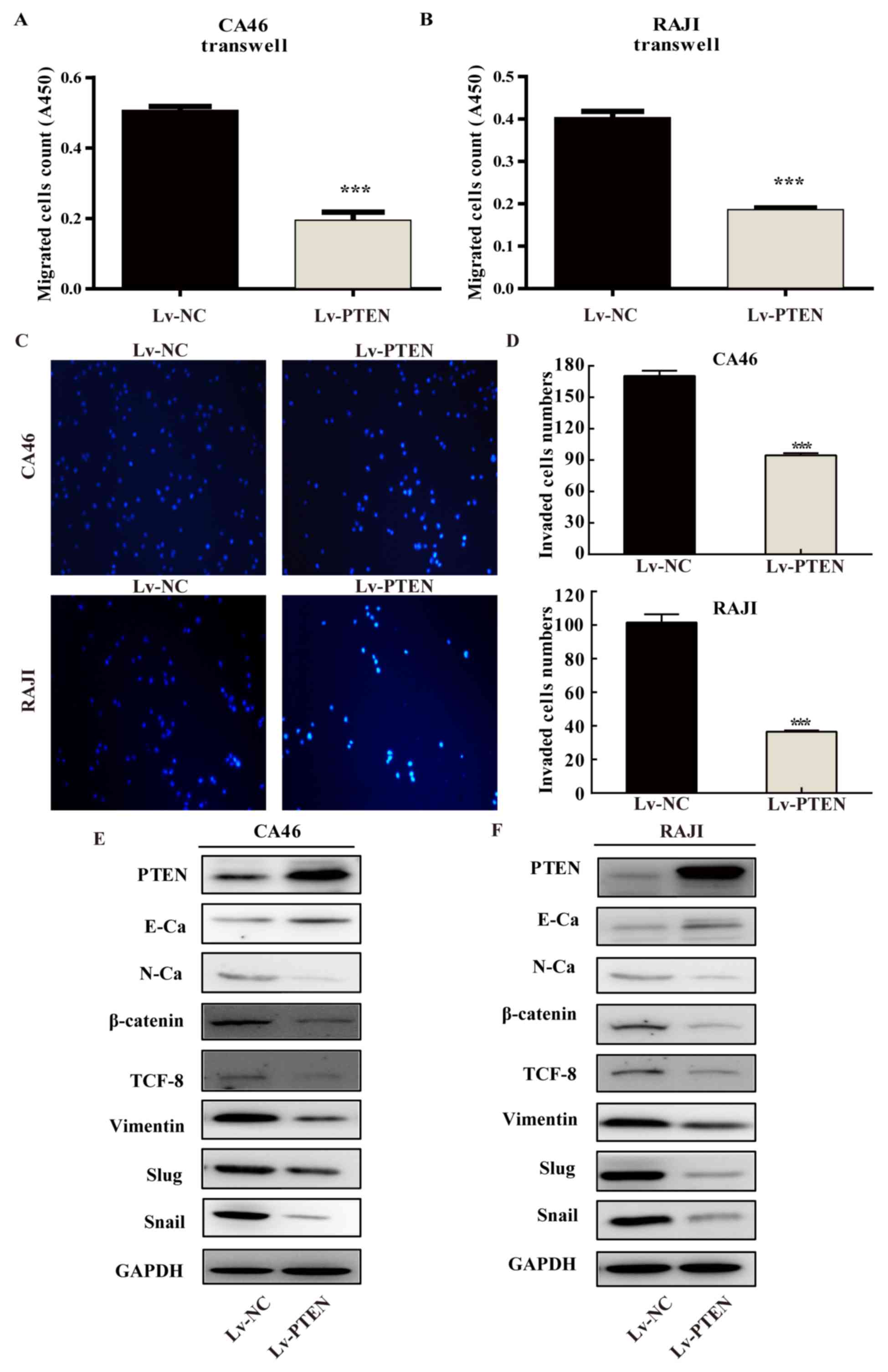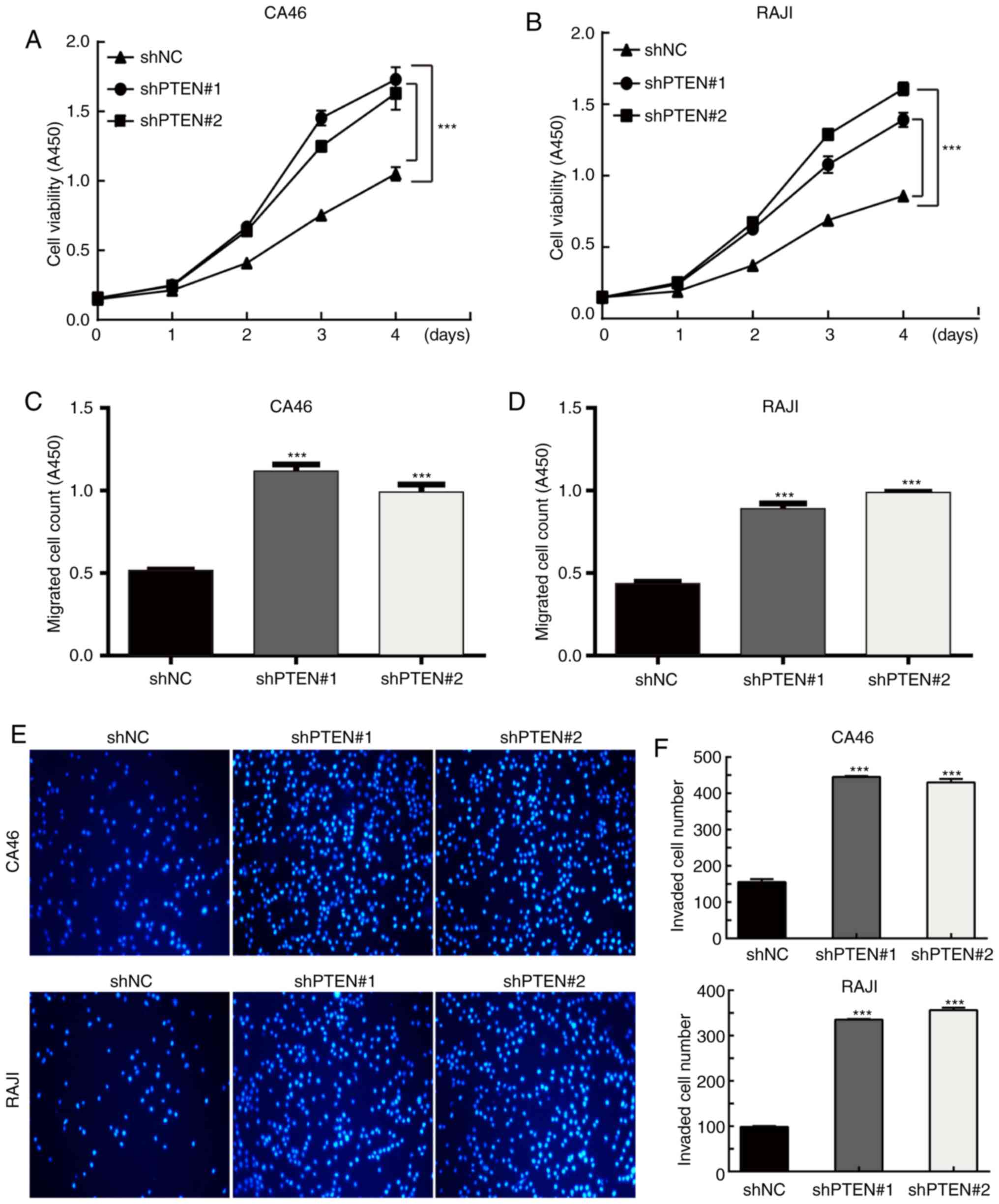|
1
|
Coakley D: Denis Burkitt and his
contribution to haematology/oncology. Br J Haematol. 135:17–25.
2006. View Article : Google Scholar : PubMed/NCBI
|
|
2
|
Miron I, Miron L, Lupu VV and Ignat A:
Silent presentation of multiple metastasis Burkitt lymphoma in a
child: A case report and review of the literature. Medicine
(Baltimore). 96:e75182017. View Article : Google Scholar : PubMed/NCBI
|
|
3
|
Bouska A, Bi C, Lone W, Zhang W, Kedwaii
A, Heavican T, Lachel CM, Yu J, Ferro R, Eldorghamy N, et al: Adult
high-grade B-cell lymphoma with Burkitt lymphoma signature: Genomic
features and potential therapeutic targets. Blood. 130:1819–1831.
2017. View Article : Google Scholar : PubMed/NCBI
|
|
4
|
Oosten LEM, Chamuleau MED, Thielen FW, de
Wreede LC, Siemes C, Doorduijn JK, Smeekes OS, Kersten MJ, Hardi L,
Baars JW, et al: Treatment of sporadic Burkitt lymphoma in adults,
a retrospective comparison of four treatment regimens. Ann Hematol.
97:255–266. 2018. View Article : Google Scholar : PubMed/NCBI
|
|
5
|
Li C, Xin P, Xiao H, Zheng Y, Huang Y and
Zhu X: The dual PI3K/mTOR inhibitor NVP-BEZ235 inhibits
proliferation and induces apoptosis of Burkitt lymphoma cells.
Cancer Cell Int. 15:652015. View Article : Google Scholar : PubMed/NCBI
|
|
6
|
Xu F, Zhang C, Cui J, Liu J, Li J and
Jiang H: The prognostic value and potential drug target of
phosphatase and tensin homolog in breast cancer patients: A
meta-analysis. Medicine (Baltimore). 96:e80002017. View Article : Google Scholar : PubMed/NCBI
|
|
7
|
Gao T, Mei Y, Sun H, Nie Z, Liu X and Wang
S: The association of Phosphatase and tensin homolog (PTEN)
deletion and prostate cancer risk: A meta-analysis. Biomed
Pharmacother. 83:114–121. 2016. View Article : Google Scholar : PubMed/NCBI
|
|
8
|
Que WC, Qiu HQ, Cheng Y, Liu MB and Wu CY:
PTEN in kidney cancer: A review and meta-analysis. Clin Chim Acta.
480:92–98. 2018. View Article : Google Scholar : PubMed/NCBI
|
|
9
|
Pfeifer M, Grau M, Lenze D, Wenzel SS,
Wolf A, Wollert-Wulf B, Dietze K, Nogai H, Storek B, Madle H, et
al: PTEN loss defines a PI3K/AKT pathway-dependent germinal center
subtype of diffuse large B-cell lymphoma. Proc Natl Acad Sci USA.
110:12420–12425. 2013. View Article : Google Scholar : PubMed/NCBI
|
|
10
|
Fu X, Zhang X, Gao J, Li X, Zhang L, Li L,
Wang X, Sun Z, Li Z, Chang Y, et al: Phosphatase and tensin homolog
(PTEN) is down-regulated in human NK/T-cell lymphoma and corrects
with clinical outcomes. Medicine (Baltimore). 96:e71112017.
View Article : Google Scholar : PubMed/NCBI
|
|
11
|
Casulo C and Friedberg J: Treating burkitt
lymphoma in adults. Curr Hematol Malig Rep. 10:266–271. 2015.
View Article : Google Scholar : PubMed/NCBI
|
|
12
|
Xu L, Wu H, Wu X, LI W and He D: The
expression pattern of Bcl11a, Mdm2 and Pten genes in B-cell acute
lymphoblastic leukemia. Asia Pac J Clin Oncol. 14:e124–e128. 2018.
View Article : Google Scholar : PubMed/NCBI
|
|
13
|
Xu W and Wang W: MicroRNA-142-5p modulates
breast cancer cell proliferation and apoptosis by targeting
phosphatase and tensin homolog. Mol Med Rep. 17:7529–7536.
2018.PubMed/NCBI
|
|
14
|
Zhao T, Adams MH, Zou SP, El-Hage N,
Hauser KF and Knapp PE: Silencing the PTEN gene is protective
against neuronal death induced by human immunodeficiency virus type
1 Tat. J Neurovirol. 13:97–106. 2007. View Article : Google Scholar : PubMed/NCBI
|
|
15
|
Furnari FB, Huang HJ and Cavenee WK: The
phosphoinositol phosphatase activity of PTEN mediates a
serum-sensitive G1 growth arrest in glioma cells. Cancer Res.
58:5002–5008. 1998.PubMed/NCBI
|
|
16
|
Zheng T, Meng X, Wang J, Chen X, Yin D,
Liang Y, Song X, Pan S, Jiang H and Liu L: PTEN- and p53-mediated
apoptosis and cell cycle arrest by FTY720 in gastric cancer cells
and nude mice. J Cell Biochem. 111:218–228. 2010. View Article : Google Scholar : PubMed/NCBI
|
|
17
|
Moon SK, Kim HM and Kim CH: PTEN induces
G1 cell cycle arrest and inhibits MMP-9 expression via the
regulation of NF-kappaB and AP-1 in vascular smooth muscle cells.
Arch Biochem Biophys. 421:267–276. 2004. View Article : Google Scholar : PubMed/NCBI
|
|
18
|
Luo L, Gong YQ, Qi X, Lai WY, Lan H and
Luo Y: Effect of tumor suppressor PTEN gene on apoptosis and cell
cycle of human airway smooth muscle cells. Mol Cell Biochem.
375:1–9. 2013.PubMed/NCBI
|
|
19
|
Streutker CJ: Extramural venous invasion
in patients with locally advanced esophageal cancer: A reminder to
pathologists to look harder. Ann Surg Oncol. 25:1465–1466. 2018.
View Article : Google Scholar : PubMed/NCBI
|
|
20
|
Fang JH, Zhang ZJ, Shang LR, Luo YW, Lin
YF, Yuan Y and Zhuang SM: Hepatoma cell-secreted exosomal
microRNA-103 increases vascular permeability and promotes
metastasis by targeting junction proteins. Hepatology.
68:1459–1475. 2018. View Article : Google Scholar : PubMed/NCBI
|
|
21
|
Aruga N, Kijima H, Masuda R, Onozawa H,
Yoshizawa T, Tanaka M, Inokuchi S and Iwazaki M:
Epithelial-mesenchymal transition (EMT) is correlated with
patient's prognosis of lung squamous cell carcinoma. Tokai J Exp
Clin Med. 43:5–13. 2018.PubMed/NCBI
|
|
22
|
Xu J, Liu D, Niu H, Zhu G, Xu Y, Ye D, Li
J and Zhang Q: Resveratrol reverses doxorubicin resistance by
inhibiting epithelial-mesenchymal transition (EMT) through
modulating PTEN/Akt signaling pathway in gastric cancer. J Exp Clin
Cancer Res. 36:192017. View Article : Google Scholar : PubMed/NCBI
|
|
23
|
Wang MH, Sun R, Zhou XM, Zhang MY, Lu JB,
Yang Y, Zeng LS, Yang XZ, Shi L, Xiao RW, et al: Epithelial cell
adhesion molecule overexpression regulates epithelial-mesenchymal
transition, stemness and metastasis of nasopharyngeal carcinoma
cells via the PTEN/AKT/mTOR pathway. Cell Death Dis. 9:22018.
View Article : Google Scholar : PubMed/NCBI
|
|
24
|
Wang M, Wu H, Li S, Xu Z, Li X, Yang Y, Li
B, Li Y, Guo J and Chen H: SYNJ2BP promotes the degradation of PTEN
through the lysosome-pathway and enhances breast tumor metastasis
via PI3K/AKT/SNAI1 signaling. Oncotarget. 8:89692–89706.
2017.PubMed/NCBI
|
|
25
|
Otsuki S, Inokuchi M, Enjoji M, Ishikawa
T, Takagi Y, Kato K, Yamada H, Kojima K and Sugihara K: Vimentin
expression is associated with decreased survival in gastric cancer.
Oncol Rep. 25:1235–1242. 2011.PubMed/NCBI
|
|
26
|
Balasundaram P, Singh MK, Dinda AK, Thakar
A and Yadav R: Study of β-catenin, E-cadherin and vimentin in oral
squamous cell carcinoma with and without lymph node metastases.
Diagn Pathol. 9:1452014. View Article : Google Scholar : PubMed/NCBI
|
|
27
|
Wang YG, Xu L, Jia RR, Wu Q, Wang T, Wei
J, Ma JL, Shi M and Li ZS: DDR2 induces gastric cancer cell
activities via activating mTORC2 signaling and is associated with
clinicopathological characteristics of gastric cancer. Dig Dis Sci.
61:2272–2283. 2016. View Article : Google Scholar : PubMed/NCBI
|
|
28
|
Wang C, Jin H, Wang N, Fan S, Wang Y,
Zhang Y, Wei L, Tao X, Gu D, Zhao F, et al: Gas6/Axl axis
contributes to chemoresistance and metastasis in breast cancer
through Akt/GSK-3β/β catenin signaling. Theranostics. 6:1205–1219.
2016. View Article : Google Scholar : PubMed/NCBI
|
|
29
|
Jin Y, Xu K, Chen Q, Wang B, Pan J, Huang
S, Wei Y and Ma H: Simvastatin inhibits the development of
radioresistant esophageal cancer cells by increasing the
radiosensitivity and reversing EMT process via the PTEN-PI3K/AKT
pathway. Exp Cell Res. 362:362–369. 2018. View Article : Google Scholar : PubMed/NCBI
|
|
30
|
Zheng Q, Lin Z, Xu J, Lu Y, Meng Q, Wang
C, Yang Y, Xin X, Li X, Pu H, et al: Long noncoding RNA MEG3
suppresses liver cancer cells growth through inhibiting β-catenin
by activating PKM2 and inactivating PTEN. Cell Death Dis.
9:2532018. View Article : Google Scholar : PubMed/NCBI
|















